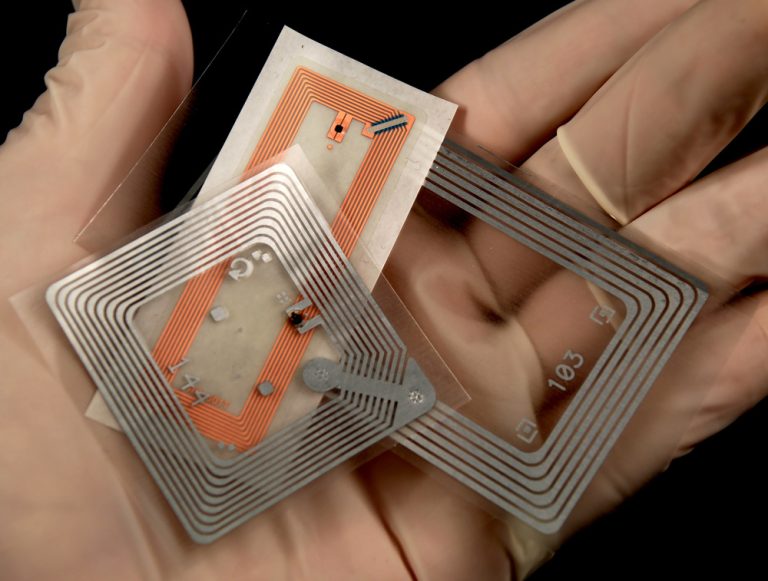Many businesses nowadays do whatever it takes to streamline inventory and process monitoring using the latest technology. Often, barcode or radio frequency identification (RFID) technologies are chosen. Both are typically compared due to their similarities, but knowing both vary is crucial.
Generally, both barcode and RFID play a crucial role in helping businesses track down assets and store information. The information is usually printed on tags and can be stored, accessed, and shared online. Although RFID technology plays an important role in inventory tracking, it has drawbacks. One is no other than skimming attempts that allow thieves to obtain sensitive information. With this in mind, knowing about RFID protection should also be a priority.
If you want to familiarize yourself with the technologies, continue reading to explore their similarities and differences to decide which suits your business best.
Table of Contents
What Is RFID?

Radiofrequency identification (RFID) involves the reading and writing data using waves to a miniature chip equipped with an antenna called a tag. The RFID tags are capable of storing large amounts of data. Over the years, the technology has been adopted in various industries due to its affordable price range. Some of the uses of RFID technology include inventory or asset tracking, access control, material management, and employee tracking, to name a few.
How Does RFID Work?
RFID works by sending out data via the air using waves. The waves power a miniature chip via its antenna, which stores data on the in-built data chip. You can use a reader or interrogator to scan the tag and read the information on the chip.
The RFID tags are available as active or passive. The passive tags are powered by the waves used to read or write the chip. As for the active chips, they need a power source such as a battery.
What Is A Barcode?
A barcode is a printed label comprising multiple black lines on a white background with varying widths. Barcodes are always present in various scenarios, such as retail, factories, warehouses, and IT departments.
How Does A Barcode Work?
A scanner is used to read barcodes. It’s crucial to remember that in every section of the barcode, there are varying widths among the black bars to create a unique number or character. The reader detects a pattern and reads the value.
Generally, you can use laser barcode scanners or a charge-coupled device (CCD) reader to scan barcodes. An advantage of the laser variant is a faster and more accurate reading. The CCD barcode readers work relatively slower than the laser variant and may not be able to read barcodes if the label is damaged. The barcode scanners require a direct line of sight with the barcode to capture the data.
What Are The Similarities And Differences Between Barcodes And RFID?
RFID and barcodes share a few similarities you need to be familiar with. Some of these evident similarities include:
- Allow convenient tracking of inventory
- Capable of storing data for easy reading of information
- Enables reading of information by utilizing both mobile or fixed scanners
Over the years, RFID and barcode technology has been utilized to monitor inventory. In the long run, both provide various industries with applications that other technologies cannot match.
Aside from the similarities, there are also differences between RFID and barcodes you need to know. Here are some of the variances between the two technologies:
- Barcode scanning can only be done one at a time, a stark difference from RFID, which allows the scanning of multiple tags simultaneously with a single scanner.
- When scanning barcodes, the scanner should be directly within sight of the code. RFID is more efficient since it’s a near-field technology that allows the scanner to read tags within a range without a direct line of sight necessary.
- RFID tags are typically embedded within the object or encased in plastic labels, allowing them to endure damage, unlike barcodes printed on adhesive labels or paper. Sadly, exposure to wear and the elements can cause the barcode to deteriorate and affect readability.
- RFID can store large data, usually up to 2,000 bytes, within a single tag which is a huge difference from what a barcode can hold. Generally, a barcode is limited to the type and amount of data it can store.
As you can see, both technologies have distinct differences. However, depending on the specific application, you must decide which works best.
Final Thoughts
After closely examining both tracking technologies, you know both share their benefits and drawbacks. With this in mind, you have to decide which one works best for the application you have in mind. Generally, if you aim to increase the level of productivity in your company, both technologies can monitor assets, allowing you to achieve your goal.

